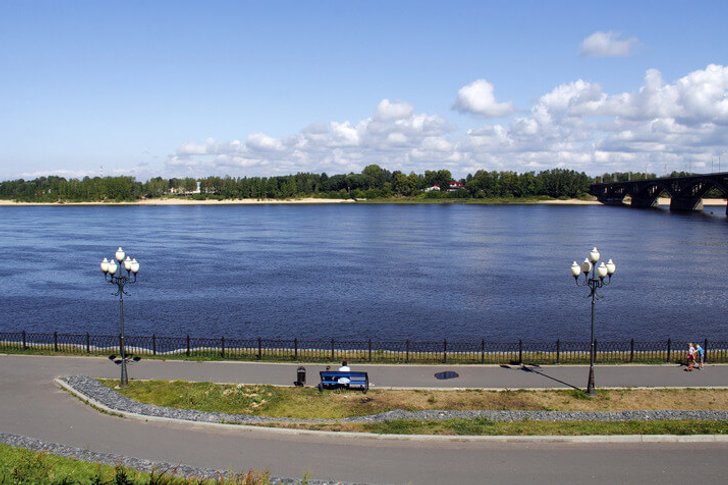Rybinsk can be safely included in the list of Russian cities that are systematically developing their tourism industry. He has a great, but not yet fully realized potential. Now travelers come here mainly as part of short tours along the Volga. They are immediately met by the sculpture "Mother Volga", installed on the sandy spit of the Rybinsk reservoir.
The main feature of the city is architectural monuments. Starting from the Church of the Sacred Heart of Jesus, built by the Polish community, ending with the colorful House of Artists - any of them can surprise and please lovers of unusual buildings. Do not forget about the sculptures depicting the history of Rybinsk. There was a place even for the brother of the founder of the Nobel Prize - Ludwig.
What to see and where to go in Rybinsk?
The most interesting and beautiful places for walking. Photos and a short description.
- Rybinsk Museum-Reserve
- Red Square
- Monument Mother Volga
- Transfiguration Cathedral
- Rybinsk tower
- House of Artists
- Museum of the Mologa region
- Rybinsk Drama Theater
- Rybinsk Puppet Theater
- Nikolskaya chapel
- Church of the Sacred Heart of Jesus
- Voznesensko-Georgievsky parish
- Kazan church
- Monument to barge hauler
- Monument to Lev Oshanin
- Monument to Ludwig Nobel
- Train Station
- Rybinskaya HPP and its locks
- Rybinsk bridge
- Volzhskaya embankment
Rybinsk Museum-Reserve
It was founded in 1910 and occupies the building of the former Grain Exchange. The museum has impressive funds, which makes it the largest in the Upper Volga. The exposition is divided into 11 permanent exhibitions. All of them are connected with the history of the city, the main occupations of local residents and the art of the region. The museum complex partially includes the former Flour Gostiny Dvor, dated to the end of the 18th century.
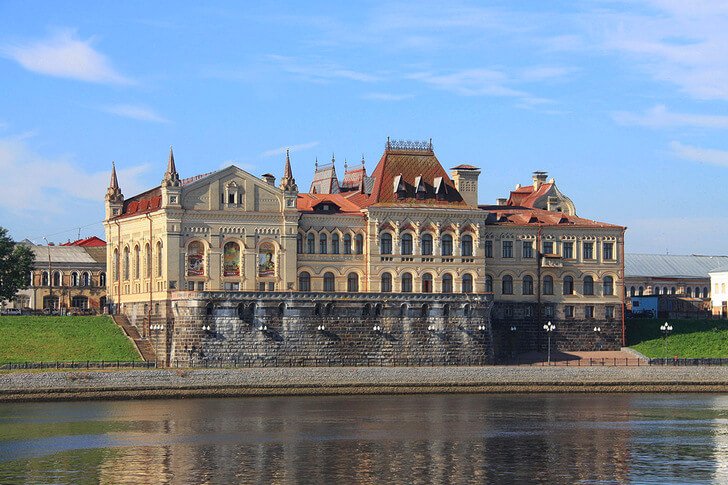
Red Square
It is located in the center of Rybinsk between Krestovaya street and Volzhskaya embankment. Founded in the 18th century. In the past - the territory of active trade. Gradually, benches and stalls gave way to flowerbeds and pedestrian areas. In 1934, a full-length monument to Lenin was erected on the square. He replaced the bust of the leader of the world proletariat. And before the revolution, this place was occupied by a monument in honor of Alexander II.

Monument "Mother Volga"
Meets guests who arrive in the city by water. The monument was erected in 1953 on the spit of the Rybinsk reservoir. The height of the monument is 28 meters. It is well viewed due to its open location. According to rumors, this plot of land was prepared for the "Worker and Collective Farm Woman", but the monument by Vera Mukhina was sent to the capital.

Transfiguration Cathedral
Erected on Cathedral Square in the first half of the 19th century. The current building of the temple replaced the wooden church - the same age as the city. Interior and exterior decoration - a mixture of styles. The iconostasis has four tiers and includes icons from the 15th century. Although the bell tower at the cathedral largely repeats its appearance, it was built half a century earlier. The relic is an armchair installed in the temple for Catherine II, who visited Rybinsk.
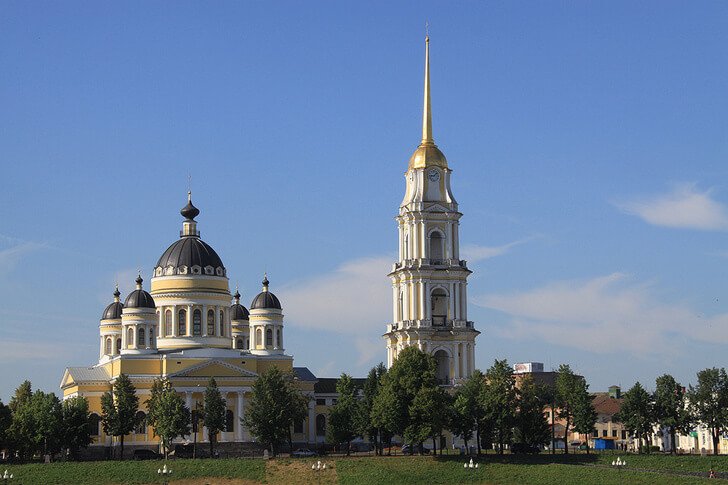
Rybinsk tower
The first tower was built in 1843, and the building of the police station became its basis. A fire destroyed the wooden structure in 1907. Five years later, a new reinforced concrete and brick structure was erected on the same site. There was no longer any special need for the tower at that time, so the object was almost never used for its intended purpose. But it quickly turned into a city landmark.
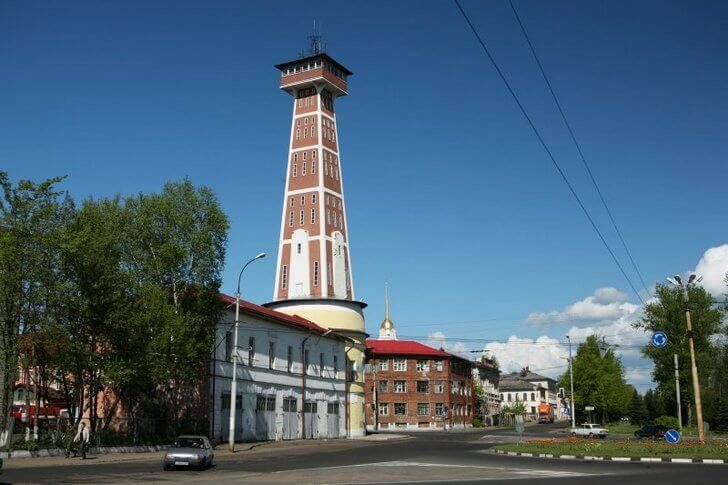
House of Artists
It was built in the first years of the last century by order of the merchant Gordeev. The external appearance of the house stands out against the background of nearby buildings: carved architraves, a corner balcony, turrets on the roof. The house is recognized as a monument of wooden architecture, made in the Russian style. The building has been restored and bears several names, including the House of Artists. It did not become a museum, remaining residential for several families at once.
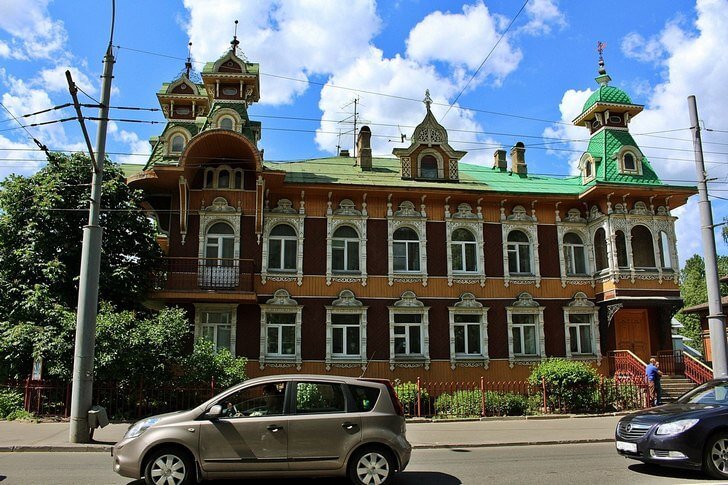
Museum of the Mologa region
It is based on the funds of the local history museum of Mologa, which was closed in 1936. Works since 1995. The exposition tells about the territories that were flooded during the construction of the Rybinsk reservoir. Funds are still being replenished. Some of the things are brought by local residents, some are by archaeologists exploring the area. Exhibits - noble furniture, household utensils, church items.

Rybinsk Drama Theater
The existence of the theater has been known since 1777. However, at that time performances were available only to noble persons. The theater in the full sense of the word appeared in the city in 1825. Then the troupe consisted of serfs. Until 1880, the artists spent the winter in Yaroslavl, and the summer in Rybinsk. Now the theater's repertoire combines classical productions and experimental plays. Tours in Russia are also regular.
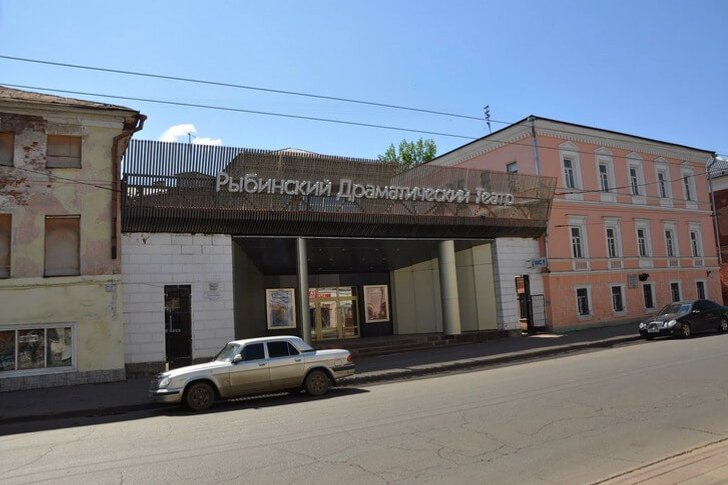
Rybinsk Puppet Theater
Its history begins in 1933, which makes the theater one of the oldest puppet theaters in the country. The hall is designed for 174 spectators. At the same time, the spacious room becomes cozy as soon as the curtain rises and the production begins. The repertoire is updated every season, taking into account the demand for performances. The troupe participates in festivals and organizes traveling programs both within the city and across Russia.
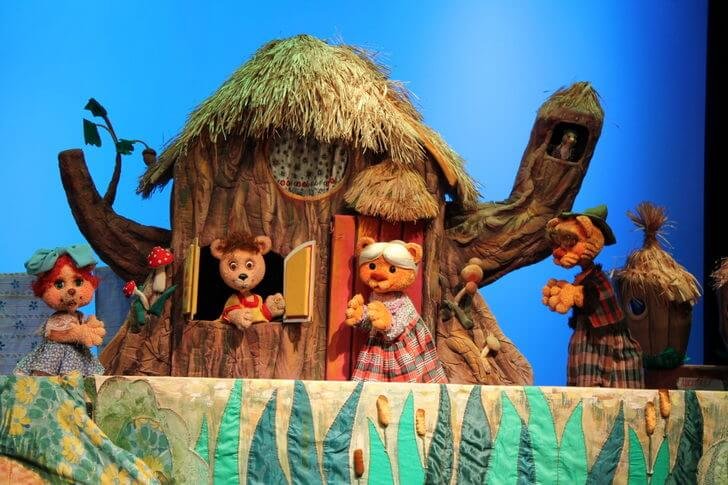
Nikolskaya chapel
Since Alexander II managed to avoid death during the assassination attempt, it was decided to build a chapel in honor of this event. It was ready by 1967 and received the name of Nicholas the Wonderworker, the patron saint of merchants and travelers. In Soviet times, the building stood without a dome, and it housed a police station. In 2010, the chapel was restored to its original appearance. Crosses covered with gold leaf were installed on the heads.

Church of the Sacred Heart of Jesus
The uprisings in Poland in the 30s of the XIX century led to the exile of rebels and sympathizers to different regions of Russia. The Polish community that settled in Rybinsk initiated the construction of a church, which was erected in 1910. For some time, a statue of Christ flaunted on the facade, after which the church was named. During the reconstruction, it was lost. Since 1979, the Prometheus student club has been operating in the temple building.
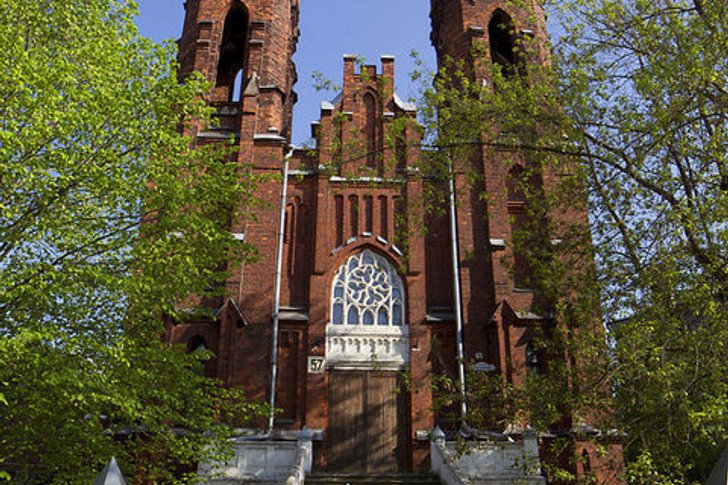
Voznesensko-Georgievsky parish
The complex consists of two temples. The first is dedicated to George the Victorious. It has been known since the 16th century, although the current building is a later one - the end of the 18th century. The archive was located here in Soviet times. The second temple was erected in honor of the Ascension of the Lord. It was consecrated in 1808 and remained open even under Soviet rule. Thanks to this, the interior decoration, including murals and the iconostasis, have been preserved.
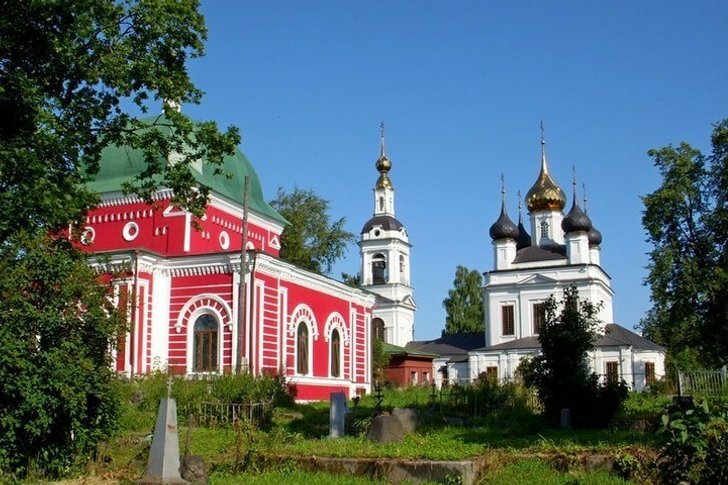
Kazan church
In the past, this place was a monastery. Initially, the church was small and had almost no decorations. The current view took shape at the turn of the 18th-19th centuries. With the advent of Soviet power, the temple was looted and the iconostasis was burned. Full-scale restoration began in the 90s of the last century. One of the most revered relics of the church is the icon of the Mother of God “It is worthy to eat”, written on Mount Athos.
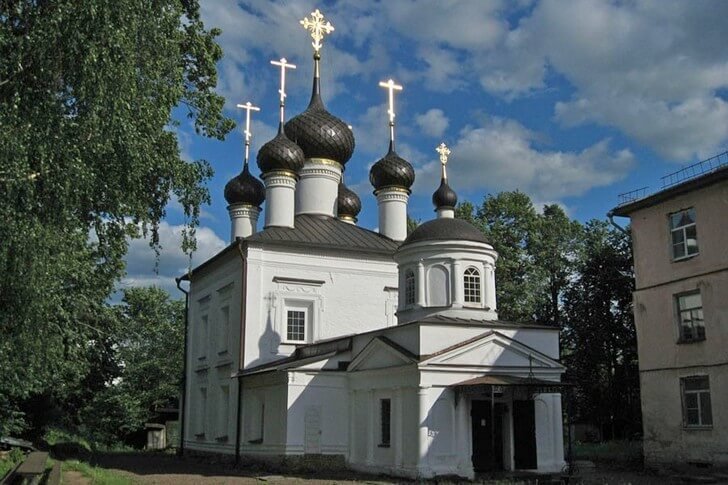
Monument to barge hauler
The only monument in the country dedicated to the people of this bygone profession. Appeared on Stoyalaya Street on the 200th anniversary of the founding of Rybinsk. Barge haulers used to gather at this place in the past. However, in 1996 it was decided to move the monument to the embankment, where it would look more harmonious with the river itself and the nearby river station. On the stone-pedestal there is a plate with the imprint of the monument.

Monument to Lev Oshanin
Installed on Volzhskaya embankment in 2003. The author of the project is M. Nurmatov. The songwriter composed many texts familiar to everyone, including “The Volga flows” and “Oh, roads ...”. The figure of Oshanin is cast in full-length bronze. He holds a book in his hands and seems to be thinking about new lines, looking into the distance. The place around is a wonderful observation platform that allows you to appreciate the nature of the area.
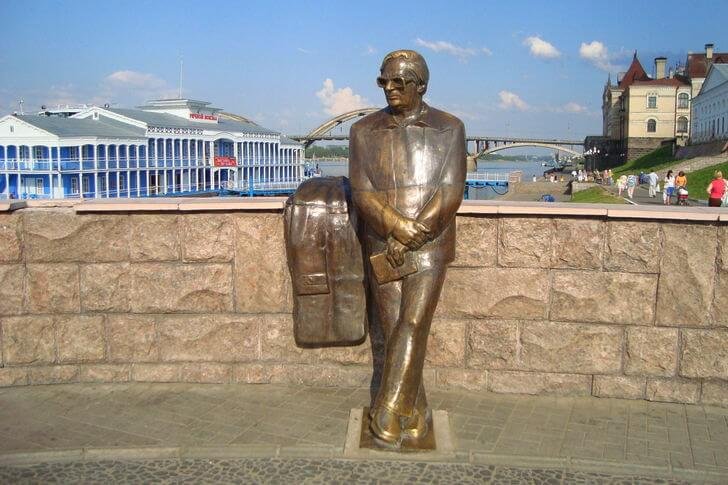
Monument to Ludwig Nobel
Opened in 2013. Sculptor - Ya. Borodin. Ludwig is an entrepreneur, engineer and philanthropist, as well as the elder brother of the founder of the Nobel Prize. In the past, a factory owned by the Nobels operated in Rybinsk, and there is also a museum in honor of the Swedish family and their heritage. The sculptural composition consists of a bust of Ludwig and two irregularly shaped plates depicting production facilities.
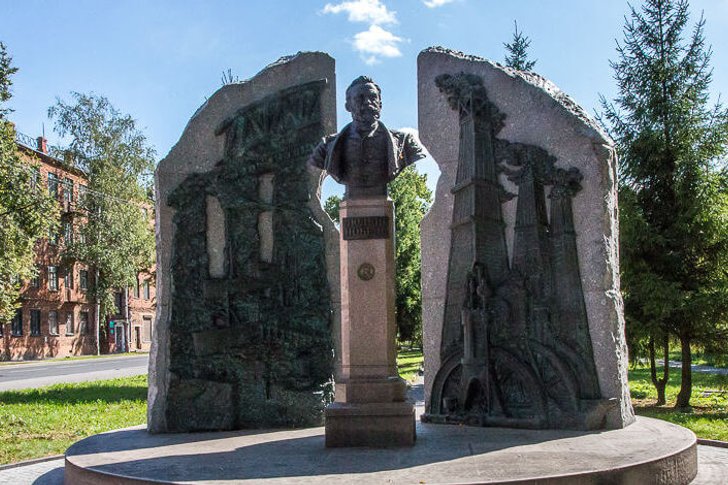
Train Station
Rebuilt in 1905. In many ways, the station complex repeats the features of its predecessor, the wooden project of Karl Rachau. Rybinsk even at that time was a major transport hub. This affected the wear and tear of the station, which in the recent past was closed for reconstruction. It is planned to update the facade and make the interior more modern. The building was given the status of an architectural monument of regional importance.
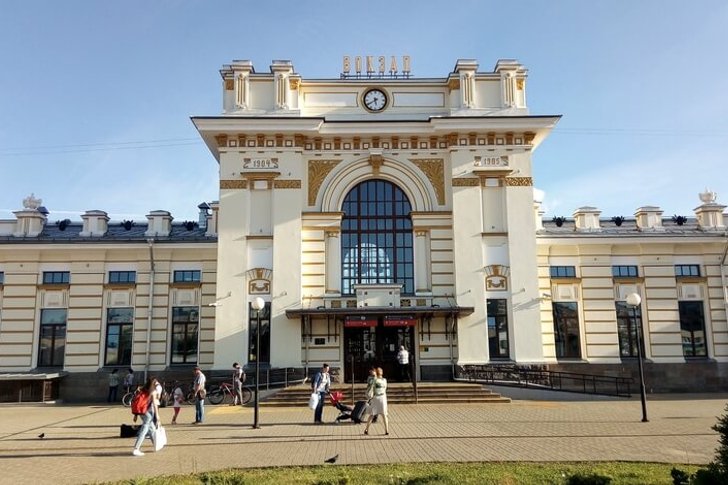
Rybinskaya HPP and its locks
Included in the Volga-Kama cascade of hydroelectric power stations. Construction started in 1935 and completed 20 years later. The prisoners of the Gulag were involved in the work. The design feature is the placement of objects on two rivers 10 km apart. Navigation locks and a water-collecting dam are on the Volga, and the building of the hydroelectric power station is on the Sheksna River. The building and gateways have the status of an architectural monument.

Rybinsk bridge
Transferred across the Volga. Construction was carried out from 1957 to 1963. There was a need for it before, but the implementation of the project was first hampered by bureaucratic delays, and then by the war. The length is about 720 meters, the width is 18 meters. Designed for both traffic and pedestrians. Two of the six spans were designed taking into account the possibility of ships passing through here.
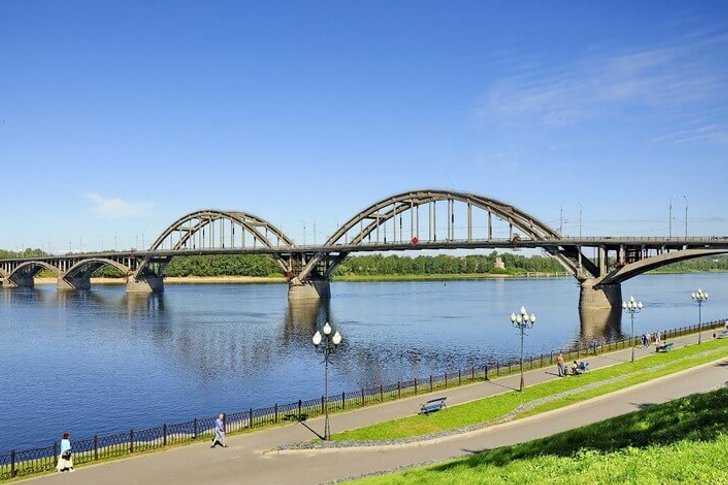
Volzhskaya embankment
It stretches in the central part of the city along the right bank of the river. It starts from the Strelka Peninsula and ends at the confluence of the Volga and Sheksna. The sidewalk is separated from the water by an openwork fence, there are benches and lanterns. On the embankment you can not only walk, enjoying nature, but also go sightseeing. For example, a monument to a plumber, the Transfiguration Cathedral, the building of the former Grain Exchange.
